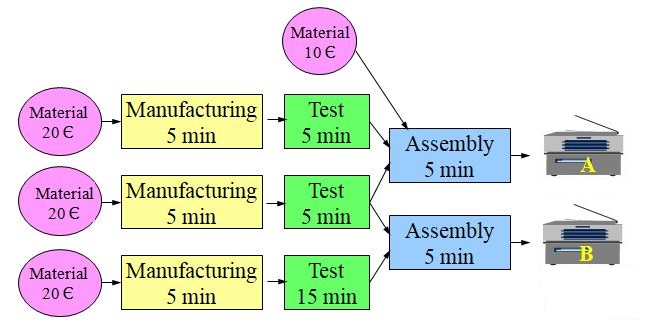Lot Size: A Value Stream Constraint

System constraints are key when it comes to optimizing our value stream. The process bottleneck limits the overall throughput and it determines such things as manufacturing lot sizes. Learning by doing is an effective way to understand how a value stream works. With this simple manufacturing line simulation you can experience the effects of alternative solutions in order to maximize profit. When resources are shared by several products there is a setup time when changing product and you have to decide what is the optimal production lot size to optimize the process. Download this Excel file TOCeng5.xlsm from OneDrive folder Polyhedrika Close other Excel files before you open this one and enable Macros. Process Objective Run the simulator to obtain the maximum profit after one simulated week. You have an initial capital of 1000 € which you can use to buy materials to feed the blue, green and brown machines. Fixed expenses amount to 2000 €/ week and they will be subtracted from the ca

